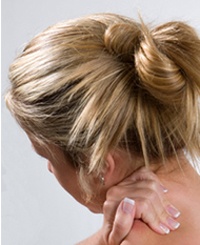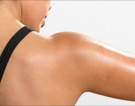
Fibromyalgia Syndrome (FMS) affects an estimated 2 percent of the population. Conventional therapies are limited in the success of treating this complex and unexplained condition. Current treatment is largely comprised of prescribing different medications for the varying symptoms in a trial and error approach. Research shows that as many as 90 percent of people with fibromyalgia have turned to complementary and alternative medicine to manage their symptoms. Acupuncture, in particular, has become a popular treatment choice and has shown to be an effective treatment for FMS.
What is Fibromyalgia Syndrome?
Fibromyalgia is a medically unexplained syndrome characterized by chronic widespread pain, a heightened and painful response to pressure, insomnia, fatigue, and depression. While not all affected persons experience all associated symptoms, the following symptoms commonly occur together:
• chronic pain
• debilitating fatigue
• difficulty sleeping
• anxiety and depression
• joint stiffness
• chronic headaches and jaw pain
• difficulty swallowing
• dryness in mouth, nose, and eyes
• hypersensitivity to odors, bright lights, and loud noises
• inability to concentrate (called "fibro fog")
• incontinence
• irritable bowel syndrome
• numbness or tingling in the fingers and feet
• painful menstrual cramps
• poor circulation in hands and feet (called Raynaud's phenomenon)
• restless legs syndrome
Fibromyalgia is diagnosed when there is a history of widespread pain in all four quadrants of the body for a minimum duration of three months and pain when pressure is applied to at least 11 of 18 designated tender points on the body. This condition does not result in any physical damage to the body or its tissues and there are no laboratory tests which can confirm this diagnosis.
Symptoms often begin after a physical or emotional trauma, but in many cases there appears to be no triggering event. Women are more prone to develop the disorder than are men, and the risk of fibromyalgia increases with age.
From an Eastern Perspective
The Oriental medicine theory of pain is expressed in this famous Chinese saying: "Bu tong ze tong, tong ze bu tong" which means "free flow: no pain, no free flow: pain."
Pain is seen as a disruption of the flow of Qi within the body. The disruption of Qi that results in fibromyalgia is usually associated with disharmonies of the Liver, Spleen, Kidney and Heart Systems.
The Acupuncture Treatment
Oriental Medicine does not recognize fibromyalgia as one particular disease pattern. Instead, it aims to treat the specific symptoms that are unique to each individual depending on their constitution, emotional state, intensity and location of their pain, digestive health, sleeping patterns and an array of other signs and symptoms. Therefore, if 10 people are treated with Oriental medicine for fibromyalgia, each of these 10 people will receive a unique, customized treatment with different acupuncture points, different herbs and different lifestyle and dietary recommendations.
Because the symptoms of fibromyalgia are highly variable form one person to another, a wide array of traditional and alternative treatments has been shown to be the most effective way of treating this difficult syndrome. A treatment program may include a combination of psychological or behavioral therapies, medications, exercise, acupuncture, herbal medicine and bodywork.
If you have fibromyalgia, acupuncture and Oriental medicine may be what you’ve been looking for to ease your symptoms and reclaim your health and vitality. Please call for a consultation today.





